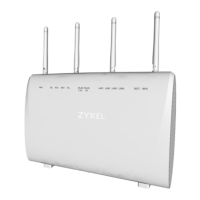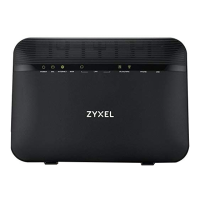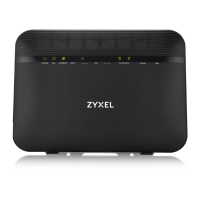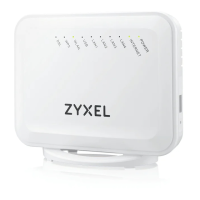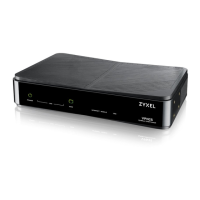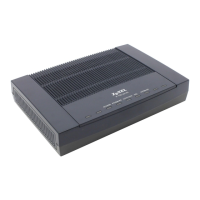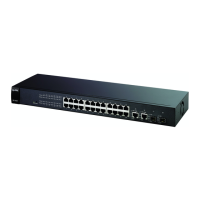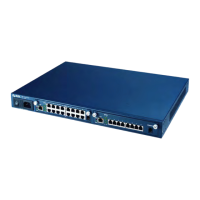Chapter 7 Wireless
VMG3925-B10C/B30C User’s Guide
104
7.3 The Guest / More AP Screen
This screen allows you to enable and configure multiple Basic Service Sets (BSSs) on the VMG.
Click Network Setting > Wireless > Guest/More AP. The following screen displays.
Figure 35 Network Setting > Wireless > Guest / More AP
The following table describes the labels in this screen.
Password The encryption mechanisms used for WPA(2) and WPA(2)-PSK are the same. The only difference
between the two is that WPA(2)-PSK uses a simple common password, instead of user-specific
credentials.
If you did not select Generate password automatically, you can manually type a pre-shared key
from 8 to 64 case-sensitive keyboard characters.
more.../less Click more... to show more fields in this section. Click less to hide them.
Encryption Select the encryption type (AES) for data encryption.
Select AES if your wireless clients can all use AES.
Group Key
Update Timer
The Group Key Update Timer is the rate at which the RADIUS server sends a new group key out to
all clients.
Table 16 Wireless > General: More Secure: WPA2-PSK (continued)
LABEL DESCRIPTION
Table 17 Network Setting > Wireless > Guest / More AP
LABEL DESCRIPTION
# This is the index number of the entry.
Status This field indicates whether this SSID is active. A yellow bulb signifies that this SSID is active. A gray
bulb signifies that this SSID is not active.
SSID An SSID profile is the set of parameters relating to one of the VMG’s BSSs. The SSID (Service Set
IDentifier) identifies the Service Set with which a wireless device is associated.
This field displays the name of the wireless profile on the network. When a wireless client scans for
an AP to associate with, this is the name that is broadcast and seen in the wireless client utility.
Security This field indicates the security mode of the SSID profile.

